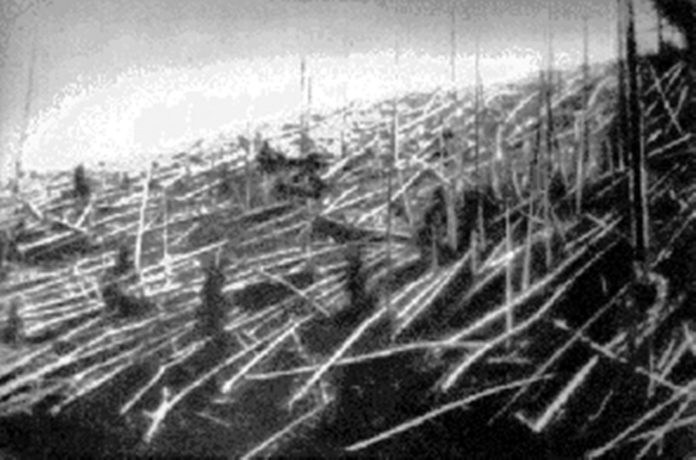On the morning of 30 June 1908, a large explosion occurred near the Podkamennaya Tunguska River in Yeniseysk Governorate (now Krasnoyarsk Krai), Russia. That event is known as the Tunguska event that leveled trees across more than 2,000 square kilometers.
It is classified as an impact event, even though no impact crater has been found. Due to the remoteness of the site and the limited instrumentation available at the time of the event, modern scientific interpretations of its cause and magnitude have relied chiefly on damage assessments, and geological studies conducted many years after the fact.
The most likely cause is an airburst asteroid strike in which the asteroid explodes in the atmosphere, similar to the Chelyabinsk meteor strike in 2013. Given the size of the impact region, it’s estimated that the original asteroid was nearly 70 meters across. This would explain why no large impact crater has been found.
Fragments of Chelyabinsk were discovered soon after the impact. But, in the case of the Tunguska event, there were no fragments. This causes several assumptions on the cause of events such as a massive leak of natural gas, or even the explosion of an alien spacecraft.
A new study shedding light on the event again, suggests that there are no fragments because the asteroid didn’t fragment after all. Instead, it glanced off Earth’s atmosphere.
For this study, scientists studied the conditions of through passage of asteroids with diameters 200, 100, and 50 m, consisting of three types of materials – iron, stone, and water ice. They found that the most probable situation is an iron asteroid around 200 meters in size.
If the object had a shallow effect on the atmosphere, coming to inside 10 kilometers of the Earth’s surface, it would have remained, to a great extent, unscathed and came back to space to enter the near sun to this day. It could, in any case, be orbiting the sun right to this day. The rapid compression of air near the asteroid would be enough to make the impact region observed.
The study shows a glancing impact is a possible solution; there’s no way to prove it’s the real cause.
Journal Reference:
- Daniil E Khrennikov, On the possibility of through passage of asteroid bodies across the Earth’s atmosphere. DOI: 10.1093/mnras/staa329
